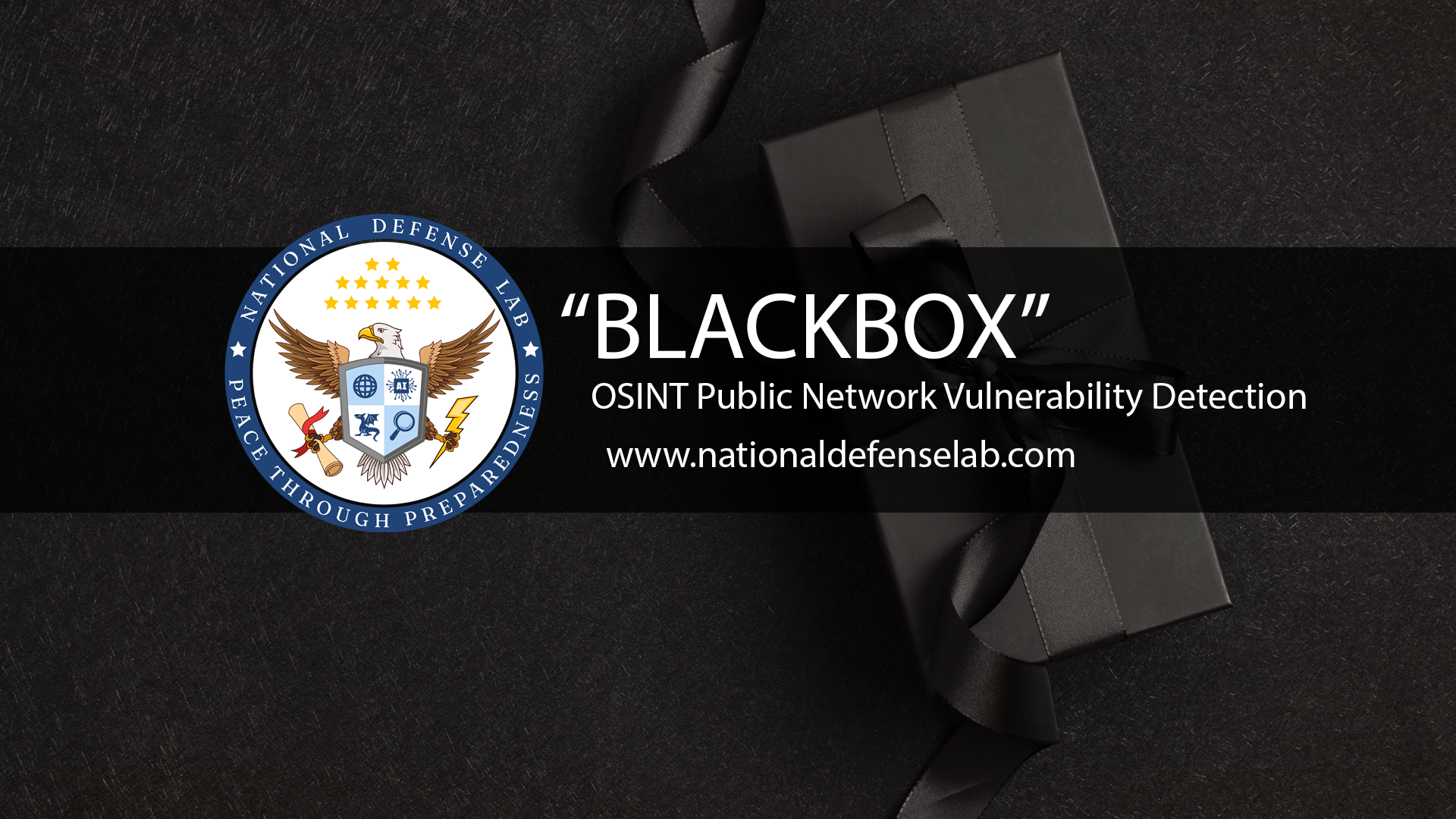Project “BlackBox” OSINT
In the modern era, the importance of cybersecurity cannot be overstated, especially when it comes to safeguarding public infrastructure networks. While organizations have invested heavily in multiple layers of security, the often-overlooked aspect of vulnerability assessment involves publicly available data. This publicly available information can often be a goldmine for adversaries to extract valuable insights into system vulnerabilities. To explore how Open Source Intelligence (OSINT) could assist in detecting vulnerabilities in public infrastructure networks, National Defense Lab initiated an experiment called "BlackBox."
- Undisclosed
- Undisclosed
- United States
- View Project
Introduction
In the modern era, the importance of cybersecurity cannot be overstated, especially when it comes to safeguarding public infrastructure networks. While organizations have invested heavily in multiple layers of security, the often-overlooked aspect of vulnerability assessment involves publicly available data. This publicly available information can often be a goldmine for adversaries to extract valuable insights into system vulnerabilities. To explore how Open Source Intelligence (OSINT) could assist in detecting vulnerabilities in public infrastructure networks, National Defense Lab initiated an experiment called "BlackBox."
Idea
Conceptual Framework
The conceptual framework behind the "BlackBox" OSINT Experiment is rooted in the belief that, in an interconnected world, even seemingly benign publicly available information can provide enough clues to reveal potential vulnerabilities in networked systems. For example, employees might share their job responsibilities on LinkedIn, or a contractor could mention specifics about a recently completed infrastructure project on their website. Separately, these pieces of information seem harmless, but when pieced together, they can provide valuable insights into potential vulnerabilities.
Objectives
- To investigate the extent to which publicly available information can reveal vulnerabilities in public infrastructure networks.
- To test the effectiveness of OSINT in a controlled environment.
Solution
The "BlackBox" Tool
To address the idea, we developed an AI-driven tool named "BlackBox." This tool automates the process of gathering information from a wide array of sources—social media platforms, online forums, publicly available documents, and databases. The tool then employs machine learning algorithms to analyze the data and highlight potential vulnerabilities in the targeted networks. For instance, the algorithm could identify that a network admin frequently participates in a forum discussing certain security issues, giving insights into what types of vulnerabilities might exist within the systems they manage.
Features
- Real-time Monitoring: Keeps track of newly published information relevant to target networks.
- Advanced Analytics: Uses NLP and machine learning algorithms to identify potential vulnerabilities.
- Reporting: Generates detailed reports outlining detected vulnerabilities and their potential impact.
Case Study
Collaboration with Local Government
Setting: A local government municipality concerned about potential vulnerabilities in its public infrastructure networks, including traffic management systems and utility controls. A mock-up of the network in a controlled environment to test the "BlackBox" tool.
Execution
- Information Gathering: "BlackBox" was set to gather data concerning the local government's network for two weeks.
- Data Analysis: The collected data was then analyzed by the tool.
- Reporting: A comprehensive report was generated, outlining detected vulnerabilities.
Findings
The "BlackBox" tool successfully identified three potential vulnerabilities in the mock network:
- Outdated Software: A Reddit post from a network admin revealed that the traffic management system was running on outdated software.
- Weak Passwords: Multiple employees had discussed password management practices on a forum, suggesting that weak passwords were an issue.
- Contractor Risks: A blog post by a contractor gave away information about system architecture, which would make specific types of attacks more feasible.
Mitigation
Upon identifying these vulnerabilities, the local government was able to take immediate action:
- Software was updated.
- A strong password policy was enforced.
- Contractor guidelines for information sharing were revised.
Success Metrics
The experiment was deemed a success, with all identified vulnerabilities mitigated, validating the effectiveness of using OSINT for security assessment. The tool reduced the time spent on identifying vulnerabilities by 60% compared to traditional methods.
Conclusion
The "BlackBox" OSINT Experiment highlighted how seemingly harmless information available publicly could expose system vulnerabilities. The experiment identified potential risks and proved the utility of OSINT when fortified by advanced analytics in public infrastructure security. Future developments will focus on scaling the "BlackBox" tool to accommodate larger networks and a broader range of potential vulnerabilities. We can aim to create a safer and more secure future with a more robust tool.




